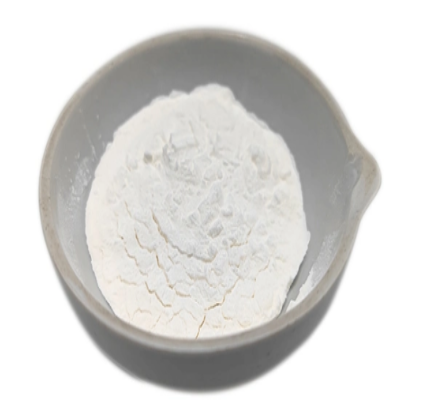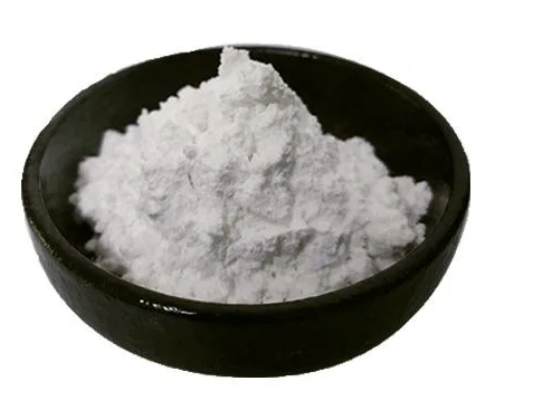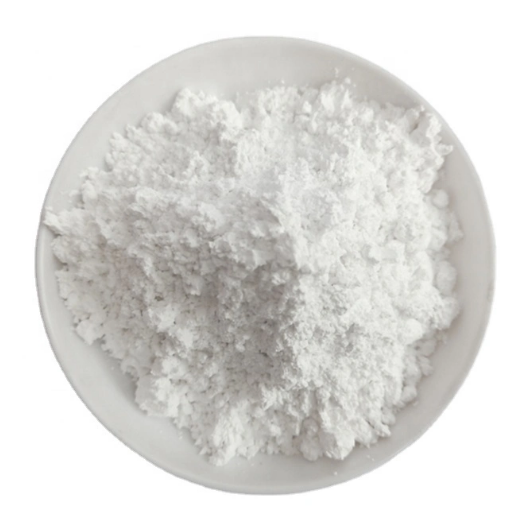-

DAOS CAS:83777-30-4 Manufacturer Price
N-Ethyl-N-(2-hydroxy-3-sulfopropyl)-3,5-dimethoxyaniline sodium salt is a chemical compound that belongs to the class of sulfonated anilines. It is a sodium salt form, meaning it is in the form of a crystalline solid that is soluble in water. This compound has a molecular formula of C13H21NO6SNa.
It possesses both alkyl and sulfo groups, which make it useful in various applications. It is commonly utilized as a dye intermediate in the production of organic dyes, especially those used in the textile industry. This compound imparts color and improves the stability of dyes, enhancing their performance and durability.
Furthermore, it can also serve as a surfactant due to its hydrophilic sulfonate group and hydrophobic alkyl group. This property allows it to reduce the surface tension of liquids, making it valuable in detergent formulations, emulsion stabilizers, and other industrial processes that involve the dispersion of substances.
-
![Bis[2-Hydroxyethyl] imino Tris-(Hydroxymethyl)-methane CAS:6976-37-0](https://cdn.globalso.com/xindaobiotech/图片169.png)
Bis[2-Hydroxyethyl] imino Tris-(Hydroxymethyl)-methane CAS:6976-37-0
Bis[2-Hydroxyethyl] imino Tris-(Hydroxymethyl)-methane, commonly known as bicine, is a chemical compound that possesses buffering properties. It is widely used in various scientific and industrial applications. Bicine acts as a pH regulator, helping to maintain a stable pH in solutions and providing optimal conditions for biochemical reactions. It finds applications in enzyme assays, cell culture media, protein purification processes, electrophoresis, and pharmaceutical formulations.
-

4-Nitrophenyl-alpha-D-glucopyranoside CAS:3767-28-0
4-Nitrophenyl-alpha-D-glucopyranoside is a chemical compound that is commonly used in biochemical experiments and assays. It is a substrate that can be cleaved by certain enzymes, such as glycosidases, to release a detectable product. Its structure consists of a glucose molecule (alpha-D-glucose) linked to a 4-nitrophenyl group. This compound is often used to study and measure the activity of enzymes involved in carbohydrate metabolism and glycosylation processes.
-

Tricine CAS:5704-04-1 Manufacturer Price
Tricine is a zwitterionic organic compound with the chemical formula C6H13NO5S. It is widely used as a buffering agent, primarily in biochemical and biological applications. Tricine’s distinguishing feature is its unique buffering capacity at a slightly acidic pH range, making it particularly useful in experiments that require a stable and precise pH environment. It is commonly used in protein electrophoresis, molecular biology techniques, enzymatic assays, and cell culture media. Tricine helps maintain optimal conditions for various biological processes, ensuring accurate and reliable results in research and analysis.
-

Egtazic acid CAS:67-42-5 Manufacturer Price
Ethylenebis(oxyethylenenitrilo)tetraacetic acid (EGTA) is a chelating agent commonly used in biological and chemical research. It is a synthetic compound that is derived from ethylenediamine and ethylene glycol. EGTA has a high affinity for divalent metal ions, particularly calcium, and is widely used to chelate and sequester these ions in various applications such as in cell culture, enzyme assays, and molecular biology techniques. By binding to calcium and other metal ions, EGTA helps to regulate their concentrations, thus influencing various biochemical processes.
-

METHYL-BETA-D-GALACTOPYRANOSIDE CAS:1824-94-8
Methyl-beta-D-galactopyranoside is a chemical compound typically derived from galactose. It is a methylated form of beta-D-galactose, where a methyl group replaces one of the hydroxyl groups of the sugar molecule. This modification alters the properties of galactose, making it more stable and suitable for various applications in biochemistry and molecular biology. Methyl-beta-D-galactopyranoside is commonly used as a substrate in enzyme assays, particularly in studies involving the activity of beta-galactosidase. It is also utilized as a molecular probe to study carbohydrate recognition and interactions, especially in lectin-mediated processes.
-

HDAOS CAS:82692-88-4 Manufacturer Price
HDAOS (N-(2-Hydroxy-3-sulfopropyl)-3,5-dimethoxyaniline sodium salt) is a chemical compound commonly used in various fields, including organic synthesis, pharmaceuticals, and material science. It consists of a phenyl ring substituted with a hydroxy group, a sulfonic group, and two methoxy groups. HDAOS is typically found in the form of a sodium salt, indicating the presence of a sodium cation associated with the sulfonic group.
-

4-(2-hydroxyethyl)piperazine-1-ethane-sulfon.ac. hemiso.S CAS:103404-87-1
4-(2-Hydroxyethyl)piperazine-1-ethanesulfonic acid hemisodium salt, also known as CAPSO Na, is a chemical compound commonly used as a buffering agent in biochemical and molecular biology applications. It is a zwitterionic salt that helps regulate and maintain a stable pH within a specific range. CAPSO Na is compatible with biological systems, making it suitable for various enzymatic assays, protein purification techniques, and cell culture media. It is also used in electrophoresis techniques and is known for its pH stability and compatibility with enzymes.
-

PHENYL-1-THIO-β-D-GALACTOPYRANOSIDE CAS:16758-34-2
PHENYL-1-THIO-β-D-GALACTOPYRANOSIDE, also known as phenyl thio galactopyranoside, is a chemical compound that belongs to the family of glycosides. It is a galactose derivative that consists of a galactopyranose sugar unit attached to a phenylthio group at the anomeric carbon.This compound is commonly used in biochemical research as a substrate for enzymes that hydrolyze glycosidic bonds. It acts as an artificial substrate to study the enzymatic activity of glycosidases and to determine their specificity, kinetics, and inhibition.PHENYL-1-THIO-β-D-GALACTOPYRANOSIDE is often employed in colorimetric and fluorometric assays to detect the presence or measure the activity of various glycosidases in biological samples. The hydrolysis of this compound by specific enzymes produces a detectable signal that can be quantified.Due to its stable phenylthio group, PHENYL-1-THIO-β-D-GALACTOPYRANOSIDE can be easily handled and stored without decomposition, making it a convenient choice for enzyme assays and research experiments.
-

Dipso sodium CAS:102783-62-0 Manufacturer Price
3-[N,N-Bis(hydroxyethyl)amino]-2-hydroxypropanesulphonic acid sodium salt, also known as BES sodium salt, is a chemical compound commonly used in biochemical research and pharmaceutical applications. It is a sulfonic acid derivative with the sodium salt form, making it water-soluble and stable in aqueous solutions.
BES sodium salt has a molecular formula of C10H22NNaO6S and a molecular weight of approximately 323.34 g/mol. It is often utilized as a buffering agent due to its ability to maintain a stable pH range in solutions.
This compound is known for its excellent capability to resist pH changes caused by dilution or addition of acids and bases. It is commonly used in biological and enzymatic reactions, cell culture media, protein purification, and other applications where precise control of pH is crucial.
-

Bis-tris hydrochloride CAS:124763-51-5
Bis-tris hydrochloride is a compound with buffering properties commonly used in biochemical and biological experiments. It helps maintain a stable pH and is utilized in protein electrophoresis, enzyme activity assays, cell culture, and pharmaceutical formulations. Its main function is to resist changes in pH when acids or bases are added to a solution, making it an essential tool in various scientific and industrial applications.
-

4-NITROPHENYL-ALPHA-D-MANNOPYRANOSIDE CAS:10357-27-4
4-Nitrophenyl-alpha-D-mannopyranoside is a chemical compound derived from the sugar mannose. It consists of a mannose molecule attached to a nitrophenyl group. This compound is often used in biological and biochemical research as a substrate for the detection and measurement of enzyme activity. Specifically, it can be used to study the activity of enzymes that hydrolyze or modify mannose-containing substrates. The nitrophenyl group attached to the mannose molecule allows for the measurement of enzyme activity by monitoring the release of the nitrophenyl moiety. This compound is commonly used in assays to study enzymes involved in carbohydrate metabolism or glycosylation processes.

